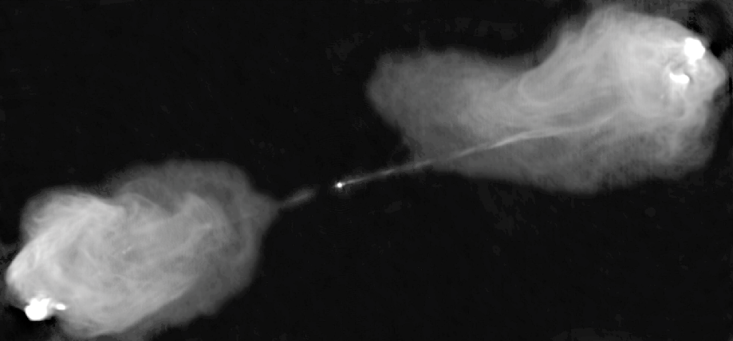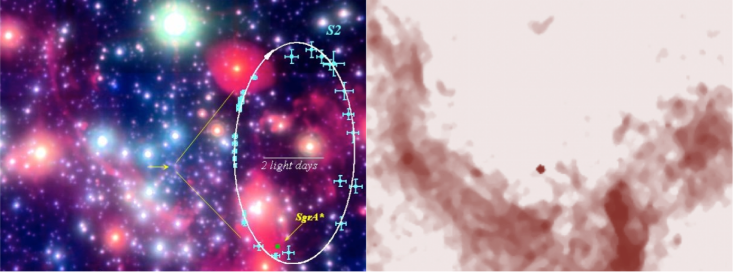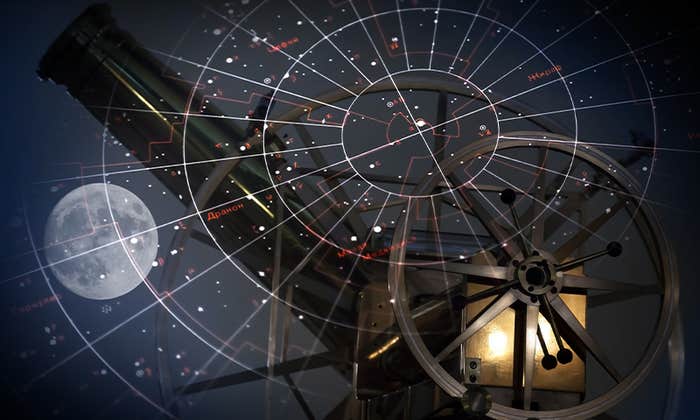An Introduction to the Black Hole Institute
Fittingly, the Black Hole Initiative (BHI) was founded 100 years after Karl Schwarzschild solved Einstein’s equations for general relativity—a solution that described a black hole decades before the first astronomical evidence that they exist. As exotic structures of spacetime, black holes continue to fascinate astronomers, physicists, mathematicians, philosophers, and the general public, following on a century of research into their mysterious nature.
The mission of the BHI is interdisciplinary and, to that end, we sponsor many events that create the environment to support interaction between researchers of different disciplines. Philosophers speak with mathematicians, physicists, and astronomers, theorists speak with observers and a series of scheduled events create the venue for people to regularly come together.
As an example, for a problem we care about, consider the singularities at the centers of black holes, which mark the breakdown of Einstein’s theory of gravity. What would a singularity look like in the quantum mechanical context? Most likely, it would appear as an extreme concentration of a huge mass (more than a few solar masses for astrophysical black holes) within a tiny volume. The size of the reservoir that drains all matter that fell into an astrophysical black hole is unknown and constitutes one of the unsolved problems on which BHI scholars work.
We are delighted to present a collection of essays which were carefully selected by our senior faculty out of many applications to the first essay competition of the BHI. The winning essays will be published here on Nautilus over the next five weeks, beginning with the fifth-place finisher and working up to the first-place finisher. We hope that you will enjoy them as much as we did.
—Abraham (Avi) Loeb
Frank B. Baird, Jr. Professor of Science, Harvard University
Chair, Harvard Astronomy Department
Founding Director, Black Hole Initiative (BHI)
In the 1700s, John Michell in England and Pierre-Simon Laplace in France independently thought “way out of the box” and imagined what would happen if a huge mass were placed in an incredibly small volume. Pushing this thought experiment to the limit, they conjectured that gravitational forces might not allow anything, even light, to escape. Michell and Laplace were imagining what we now call a black hole.
Astronomers are now convinced that when massive stars burn through their nuclear fuel, they collapse to near nothingness and form a black hole. While the concept of a star collapsing to a black hole is astounding, the possibility that material from millions and even billions of stars can condense into a single supermassive black hole is even more fantastic. Yet astronomers are now confident that supermassive black holes exist and are found in the centers of most of the 100 billion galaxies in the universe.
How did we come to this astonishing conclusion? The story begins in the mid-1900s when astronomers expanded their horizons beyond the very narrow range of wavelengths to which our eyes are sensitive. Very strong sources of radio waves were discovered and, when accurate positions were determined, many were found to be centered on distant galaxies. Shortly thereafter, radio antennas were linked together to greatly improve angular resolution. These new “interferometers” revealed a totally unexpected picture of the radio emission from galaxies—the radio waves did not appear to come from the galaxy itself, but from two huge “lobes” symmetrically placed about the galaxy. Figure One shows an example of such a “radio galaxy,” named Cygnus A. Radio lobes can be among the largest structures in the universe, upward of a hundred times the size of the galaxy itself.
How are immense radio lobes energized? Their symmetrical placement about a galaxy clearly suggested a close relationship. In the 1960s, sensitive radio interferometers confirmed the circumstantial case for a relationship by discovering faint trails, or “jets,” tracing radio emission from the lobes back to a very compact source at the precise center of the galaxy. These findings motivated radio astronomers to increase the sizes of their interferometers in order to better resolve these emissions. Ultimately this led to the technique of Very Long Baseline Interferometry (VLBI), in which radio signals from antennas across the Earth are combined to obtain the angular resolution of a telescope the size of our planet! Radio images made from VLBI observations soon revealed that the sources at the centers of radio galaxies are “microscopic” by galaxy standards, even smaller than the distance between the sun and our nearest star.

When astronomers calculated the energy needed to power radio lobes they were astounded. It required 10 million stars to be “vaporized,” totally converting their mass to energy using Einstein’s famous equation E = mc2! Nuclear reactions, which power stars, cannot even convert 1 percent of a star’s mass to energy. So trying to explain the energy in radio lobes with nuclear power would require more than 1 billion stars, and these stars would have to live within the “microscopic” volume indicated by the VLBI observations. Because of these findings, astronomers began considering alternative energy sources: supermassive black holes.
Given that the centers of galaxies might harbor supermassive black holes, it was natural to check the center of our Milky Way galaxy for such a monster. In 1974, a very compact radio source, smaller than 1 second of arc (1/3600 of a degree) was discovered there. The compact source was named Sagittarius A*, or Sgr A* for short, and is shown at the center of the right panel of Figure 2. Early VLBI observations established that Sgr A* was far more compact than the size of our solar system. However, no obvious optical, infrared, or even X-ray emitting source could be confidently identified with it, and its nature remained mysterious.
Meanwhile, the development of high-resolution infrared cameras revealed a dense cluster of stars at the center of the Milky Way. These stars cannot be seen at optical wavelengths, because visible light is totally absorbed by intervening dust. However, at infrared wavelengths 10 percent of their starlight makes its way to our telescopes, and astronomers have been measuring the positions of these stars for more than two decades. These observations culminated with the important discovery that stars are moving along elliptical paths, which are a unique characteristic of gravitational orbits. One of these stars has now been traced over a complete orbit, as shown in the left panel of Figure Two.

Many stars have been followed along partial orbits, and all are consistent with orbits about a single object. Two stars have been observed to approach the center to within the size of our solar system, which by galaxy standards is very small. At this point, gravity is so strong that stars are orbiting at nearly 10,000 kilometers per second—fast enough to cross the Earth in one second! These measurements leave no doubt that the stars are responding to an unseen mass of 4 million times that of the sun. Combining this mass with the (astronomically) small volume indicated by the stellar orbits implies an extraordinarily high density. At this density it is hard to imagine how any type of matter would not collapse to form a black hole.
The infrared results just described are beautifully complemented by observations at radio wavelengths. In order to identify an infrared counterpart for Sgr A*, the position of the radio source needed to be precisely transferred to infrared images. An ingenious method to do this uses sources visible at both radio and infrared wavelengths to tie the reference frames together. Ideal sources are giant red stars, which are bright in the infrared and have strong emission at radio wavelengths from molecules surrounding them. By matching the positions of these stars at the two wavebands, the radio position of Sgr A* can be transferred to infrared images with an accuracy of 0.001 seconds of arc. This technique placed Sgr A* precisely at the position of the gravitational center of the orbiting stars.
How much of the dark mass within the stellar orbits can be directly associated with the radio source Sgr A*? Were Sgr A* a star, it would be moving at over 10,000 kilometers per second in the strong gravitational field as other stars are observed to do. Only if Sgr A* is extremely massive would it move slowly. The position of Sgr A* has been monitored with VLBI techniques for over two decades, revealing that it is essentially stationary at the dynamical center of the Milky Way. Specifically, the component of Sgr A*’s intrinsic motion perpendicular to the plane of the Milky Way is less than one kilometer per second. By comparison, this is 30 times slower than the Earth orbits the sun. The discovery that Sgr A* is essentially stationary and anchors the galactic center requires that Sgr A* contains over 400,000 times the mass of the sun.
Recent VLBI observations have shown that the size of the radio emission of Sgr A* is less than that contained within the orbit of Mercury. Combining this volume available to Sgr A* with the lower limit to its mass yields a staggeringly high density. This density is within a factor of less than 10 of the ultimate limit for a black hole. At such an extreme density, the evidence is overwhelming that Sgr A* is a supermassive black hole.
These discoveries are elegant for their directness and simplicity. Orbits of stars provide an absolutely clear and unequivocal proof of a great unseen mass concentration. Finding that the compact radio source Sgr A* is at the precise location of the unseen mass and is motionless provides even more compelling evidence for a supermassive black hole. Together they form a simple, unique demonstration that the fantastic concept of a supermassive black hole is indeed a reality. John Michell and Pierre-Simon Laplace would be astounded to learn that their conjectures about black holes not only turned out to be correct, but were far grander than they ever could have imagined.
Mark J. Reid is a senior astronomer at the Center for Astrophysics, Harvard & Smithsonian. He uses radio telescopes across the globe simultaneously to obtain the highest resolution images of newborn and dying stars, as well as black holes.
This essay placed second in the Black Hole Institute’s essay contest.






























